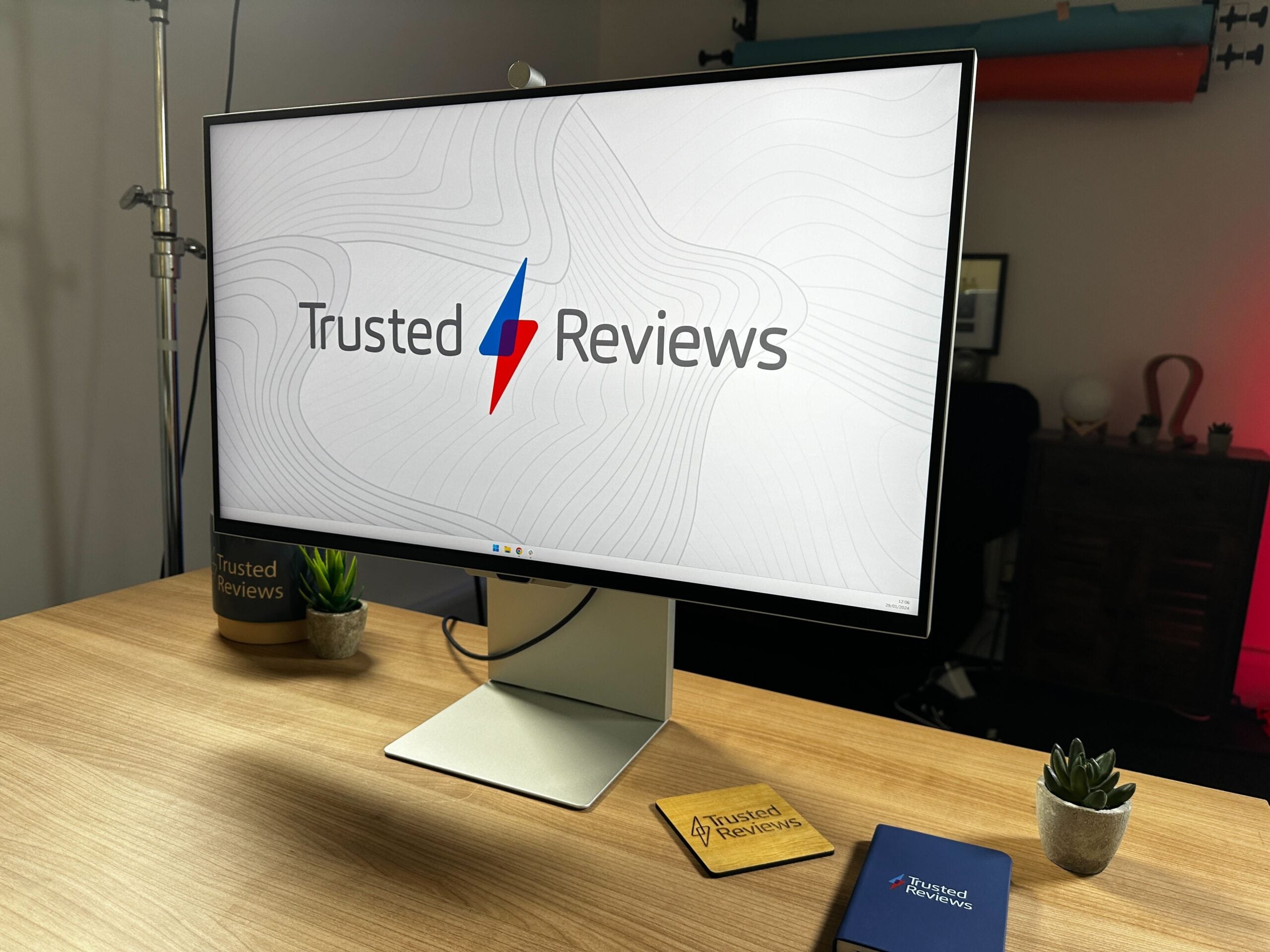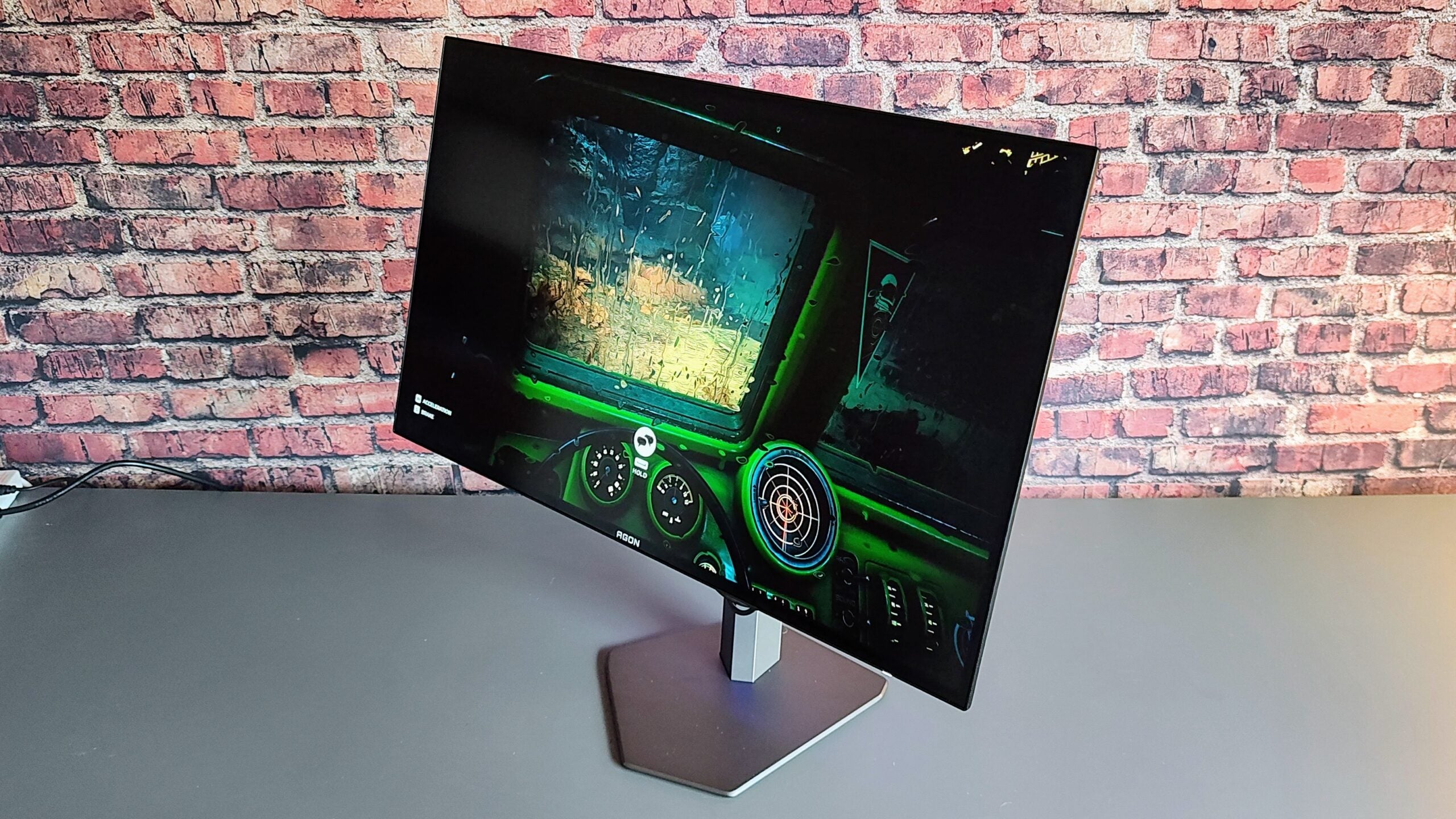LG 27GN88A Review
An innovative gaming display with an unusual stand
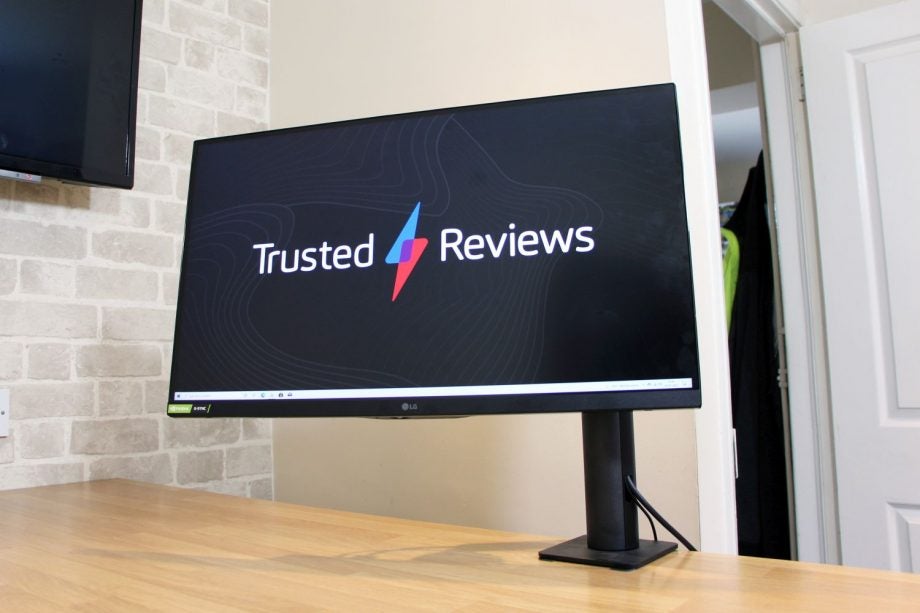
Verdict
The LG 27GN88A monitor presents impressive ergonomics, bold colours and smooth syncing that’s ideal for mainstream gaming. However, the low contrast, lack of features and high price are major issues.
Pros
- Superb, versatile arm design
- Bold, accurate colours
- Robust build quality
- Great mainstream refresh rate performance
Cons
- Underwhelming contrast
- Few extra features
- Expensive
- No decent HDR options
Availability
- UKRRP: £459
- USARRP: $469
- EuropeRRP: €440
Key Features
- Impressive ergonomic armThe arm offers more movement than any conventional display
- 1440p resolutionThe 2560 x 1440 resolution delivers crisp gaming without the need for an expensive graphics card
- 144Hz refresh rateThe 144Hz refresh rate is implemented very well, and it works with AMD and Nvidia graphics cards
Introduction
Remove the LG 27GN88A from the box and you’d be forgiven for thinking that something was missing. This isn’t the case, though – this new gaming display just doesn’t have a base.
Instead, LG’s panel uses a clamp to attach the 27GN88A to your desk. The firm reckons that this design saves space and improves ergonomics, and it makes lots of sense in real-world use.
The LG 27GN88A is eye-catching, but it has plenty of rivals. If you want to save some cash, there’s the MSI Optix MAG272CQR, which is a 27in, 1440p curved display with a 165Hz refresh rate and a price of £399 / $349 / €340.
If you’re feeling flush, the Samsung Odyssey G7 is another curved 1440p panel, with the same 27in diagonal as the LG – and a 240Hz refresh rate. It will currently cost you £549 / $699 / €565.
If you go beyond the models mentioned here, there are plenty of other options if you want the best gaming monitor possible. If you want to replicate the LG’s specification without the fancy stand or a curved screen, you’re looking at a price of around £300 / $300 / €300 as a minimum.
Design and features
- Superb, versatile ergonomic abilities thanks to the clamping stand
- Good build quality and smooth movement make this display easy to use
- Not many extra features – no RGB LEDs, no USB-C, no speakers
The LG’s clever clamp design is easy to secure to any desk, with a wide opening and plenty of adjustment options, and the clamp has a soft coating for increased grip.
Once installed, the LG serves up generous adjustment: its double-jointed arm can extend or retract by 180mm, it has 280 degrees of swivel movement, and 130mm of height adjustment. In addition, the display can pivot to portrait mode and tilt by 25 degrees, and it supports 100mm VESA mounts.
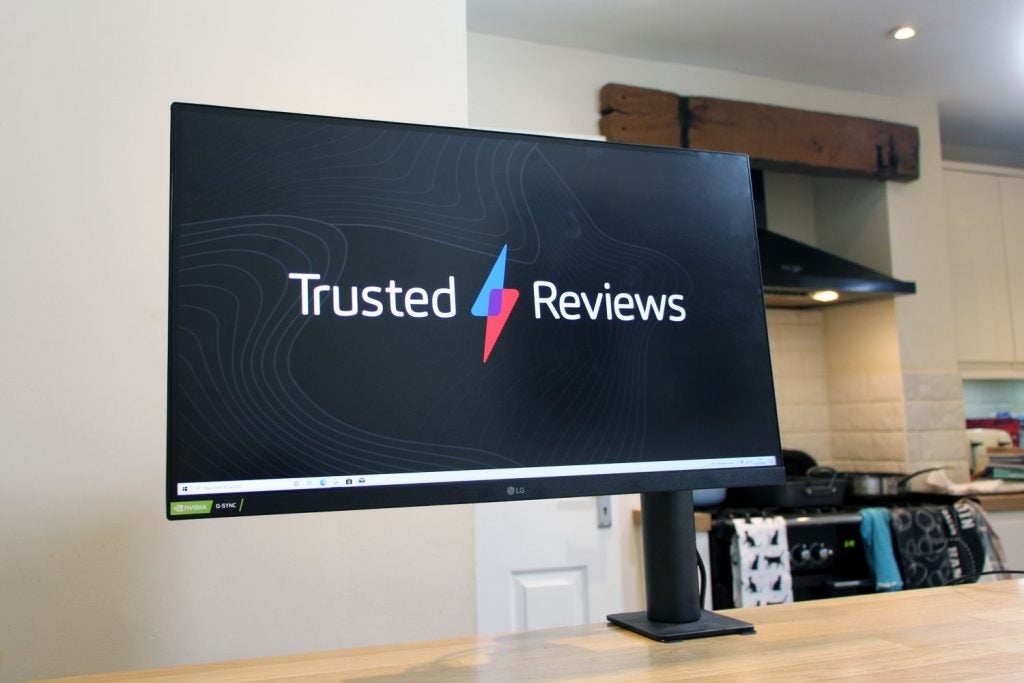
That’s more adjustment than any rival offers – no conventional desktops serve up that extending and retracting arm, and none present that degree of swivel movement. The LG is an ideal option if you don’t have a big desk, or if you want to save space or simply create an unconventional layout. Add in the neat cable management in the stand and you’ve got a recipe for a minimal desktop setup.
Most of the movement is smooth, too – you don’t need to use much elbow grease to get the display shifting, and it doesn’t drift or alter once positioned. The only slight issue is height adjustment, which is slightly stiff.
It’s pretty easy to adjust the LG once it’s built: its on-screen menu displays information sensibly and has lots of options, it’s fast, and it’s navigated using a handy joystick.
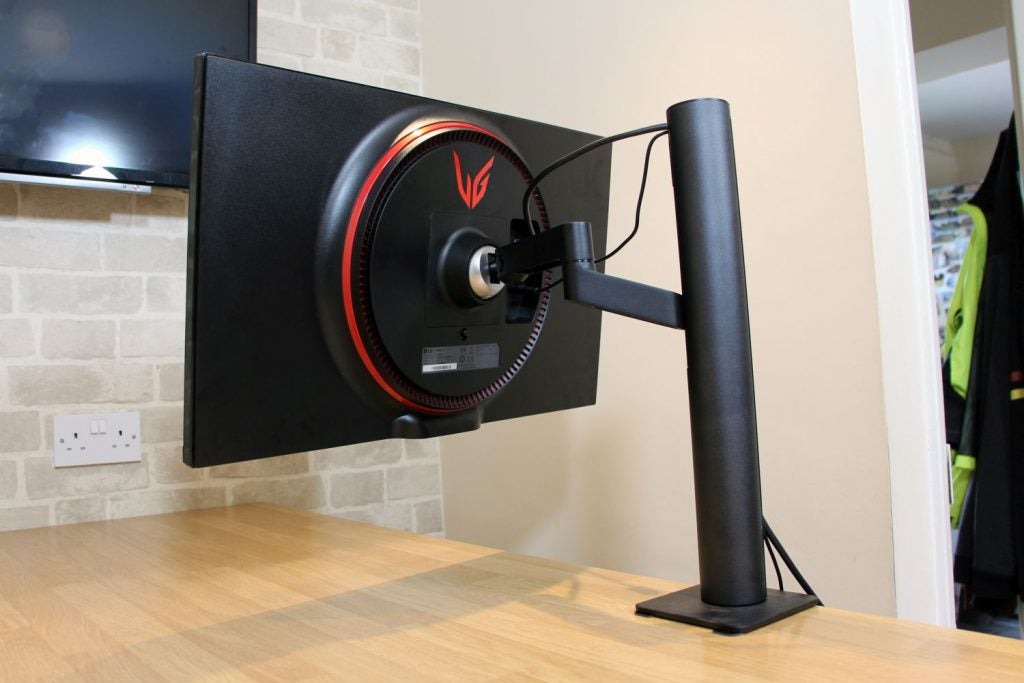
Build quality is great, using robust materials in the display, arm and stand. The monitor doesn’t look bad, either, sporting a slim bezel, a sleek back panel and an attractive metallic red ring on the rear.
On the inside, LG’s panel has a 27in diagonal and a 2560 x 1440 resolution. The 109ppi density level means games are more crisp than on the average 1080p panel, meaning they’re better-looking and more absorbing.
The LG uses IPS technology, and is compatible with AMD FreeSync and Nvidia G-Sync at 144Hz. Combine this with the 1ms GTG response time and 10-bit colour, and you have a specification that’s squarely fixed on top-notch gaming.
However, the LG misses features elsewhere. The two USB ports are positioned awkwardly at the rear, and there are no speakers and no RGB LEDs. Connectivity only extends to HDMI and DisplayPort, with no USB-C.
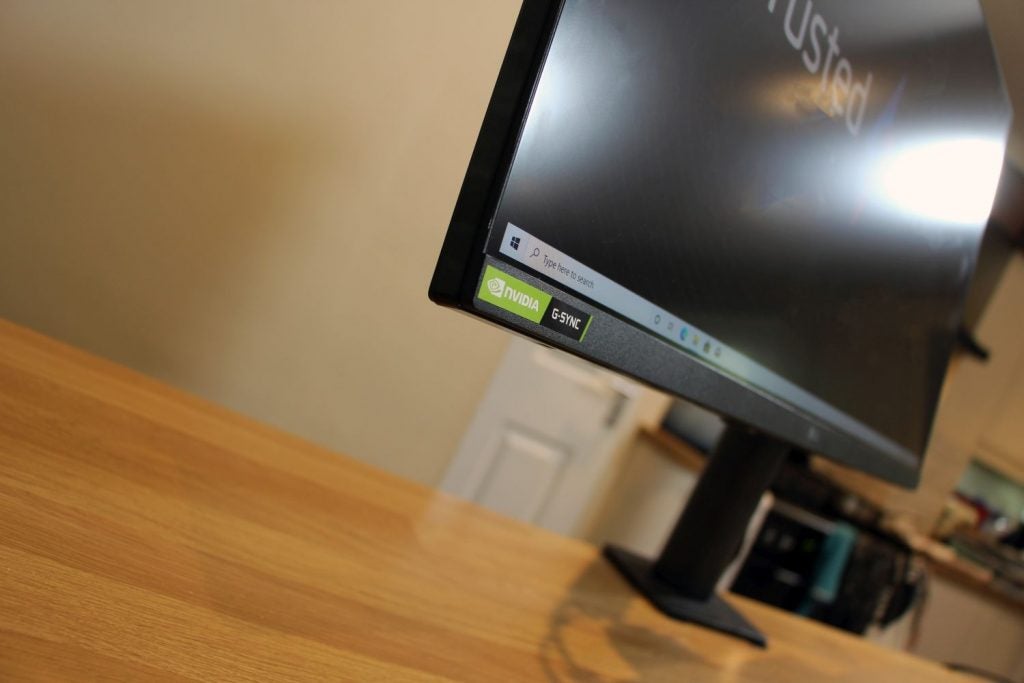
These are areas where rivals are better. The MSI Optix MAG272CQR has RGB LEDs, a curved panel and underlying VA technology. The pricier Samsung is another VA panel, and the Odyssey G7 offers faster USB ports, RGB LEDs, a 240Hz refresh rate and a better HDR protocol for only a little extra cash. Both rivals also support 100mm VESA mounting.
Neither rival has the LG’s ergonomic stand, but if you prefer other features, they could prove more worthwhile.
Look beyond the LG’s close rivals and towards the wider market and there are question marks around the 27GN88A’s value. It’s easy to find monitors that mirror the LG’s specification for £300 / $300 / €300 or only a little more, and monitor arms can be easily found for less than £100 / $100 / €100. They attach using the VESA mount and offer broadly the same movement options.
Image quality
- Colours are big, bold and vibrant on this panel
- The refresh rate, response time and input lag deliver smooth, crisp gaming
- The lack of contrast leaves images lacking depth
I used my colorimeter to test the performance of the LG 27GN88A monitor. Out of the box, the LG’s brightness level of 225 nits is fine for everyday gaming, but that figure is paired with a black point of 0.29 nits.
That’s high, and it creates a contrast ratio of 776:1 – which is low. In real-world use, the LG lacks depth and nuance, with black areas that look washed-out and grey when compared to the depth provided by VA panels.
The colour temperature of 6287K is fine, and the LG rendered a perfect 99.8% of the sRGB gamut with a volume level of 141.5%, displaying punchy and well-saturated colours as a result. The Delta E of 2.61 is good rather than great, but that’s fine for gaming. This screen lacks depth, but the bold colours mean that vibrant games can still look good.
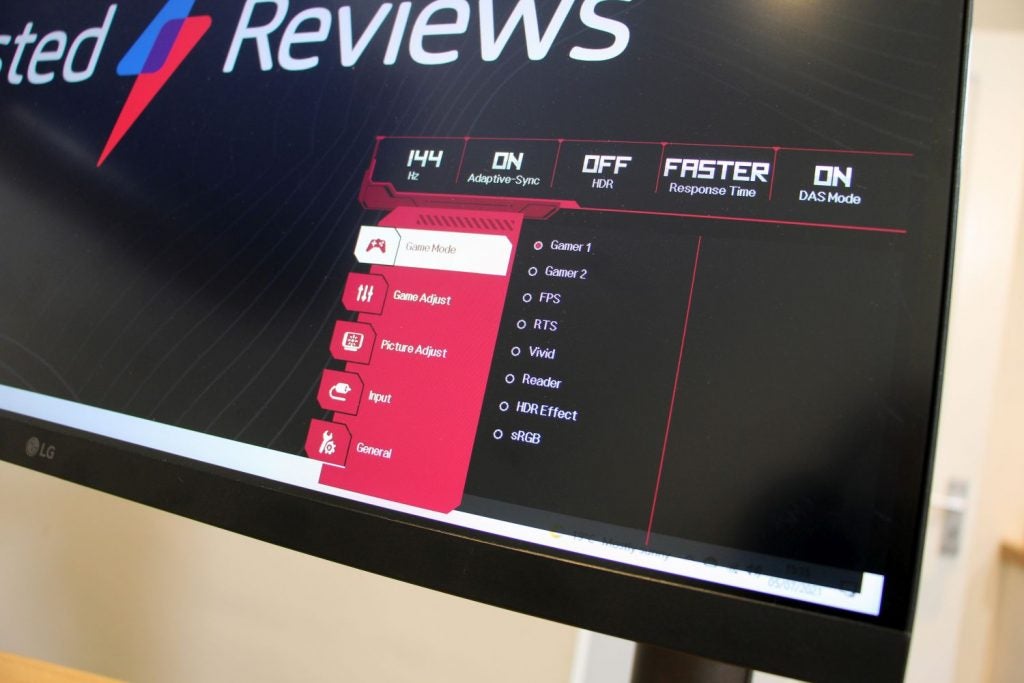
Negatively, the sRGB, FPS and RTS modes aren’t worth using – they’re not bad, but none improve on the LG’s factory settings. Don’t use this display for HDR gaming, either. It only adheres to DisplayHDR 400, which is an entry-level protocol, and it doesn’t have the brightness, depth or dimming required to make a meaningful difference in games with HDR modes.
The 144Hz refresh rate and adaptive sync work very well. Motion is smooth and crisp, with only a little blurring when using conventional overdrive settings. This combines with top-notch input lag and response time performance, and it means that single-player titles and mainstream eSports games look smooth and fast on this panel.
You’ll only need to seek out a higher refresh rate if you want to take eSports seriously, or if you want to play particularly fast titles. If you go down that route, everything will be even faster, smoother and crisper.
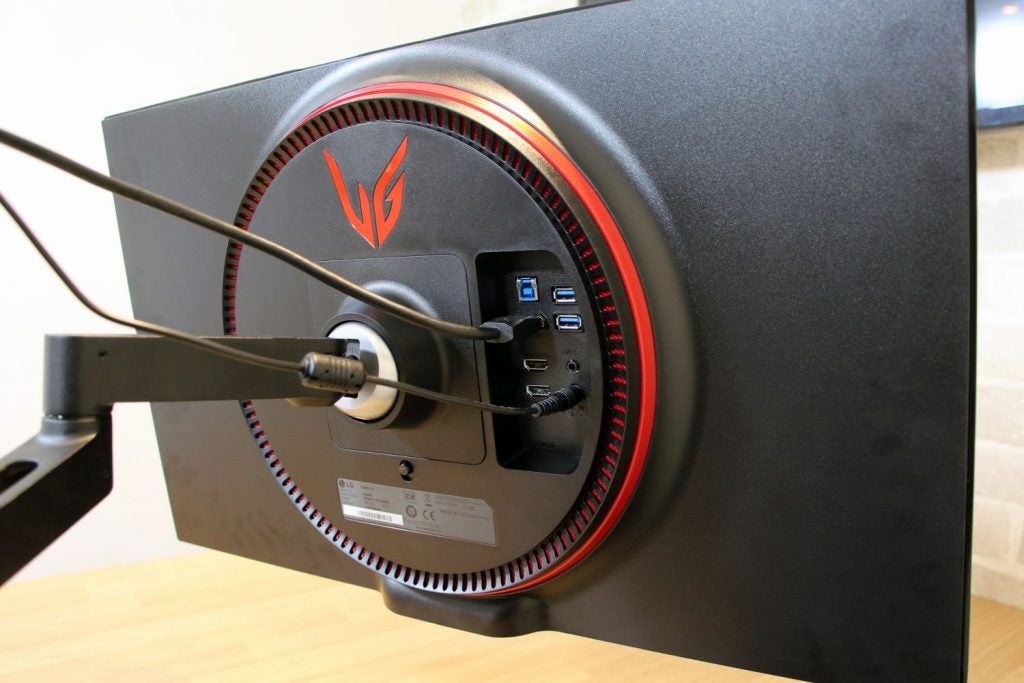
The LG 27GN88A is simultaneously impressive and difficult to recommend. On the positive side, its ergonomic arm offers excellent adjustment options, and it offers bold colours, an impressive refresh rate and syncing performance, plus a solid resolution. That makes it a versatile mainstream gaming display.
The poor contrast ratio leaves this display lacking depth, though, and the LG doesn’t have many extra features. It’s pricey, too: rivals are either cheaper or offer better value – and you could easily buy this kind of display with a third-party monitor arm for less than the LG’s £459 / $469 / €440 price.
Ultimately, I find it hard to recommend this display. The ergonomic arm may be useful, but its advantages don’t outweigh the high price and low contrast.
Best Offers
Should you buy it?
You want generous adjustment options and bold, smooth gaming:
The LG 27GN88A’s main strength is its versatile stand, enabling numerous positions. It also excels at the basics as a gaming display.
You want deep imagery and extra features:
The monitor’s greatest issue is its low contrast, which means you don’t get great depth for the picture. There are also a couple of missing features such as a USB-C port.
Final thoughts
The LG 27GN88A monitor has a superb ergonomic design that delivers great versatility, and it has vibrant colours and smooth mainstream syncing ability. But it’s too expensive, its contrast isn’t good enough and it doesn’t offer many extra features.
FAQs
The LG is protected by a one-year parts and labour warranty.
LG includes a DisplayPort cable, an extra base plate, screws and a power cable.
Yes, the LG monitor does feature a standard VESA mount.
Trusted Reviews’ test data
Specs
Jargon buster
Refresh Rate
The number of times the screen refreshes itself per second.FPS
‘Framerate per second’ indicates how many images are shown within one second. The higher this figure, the smoother in-game motion will appear. Powerful discrete GPUs are far more likely to offer higher framerates compared to integrated graphics housed inside processors.Nits
The brightness level of a display. 300 nits is regarded as the minimum target for high-end screens.

